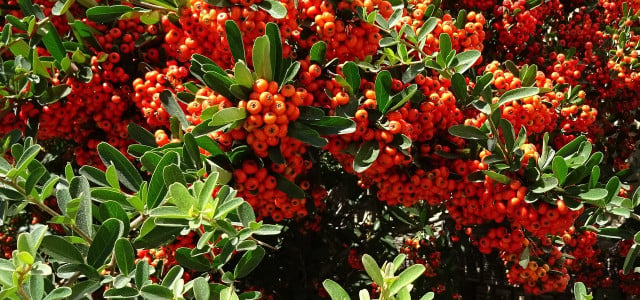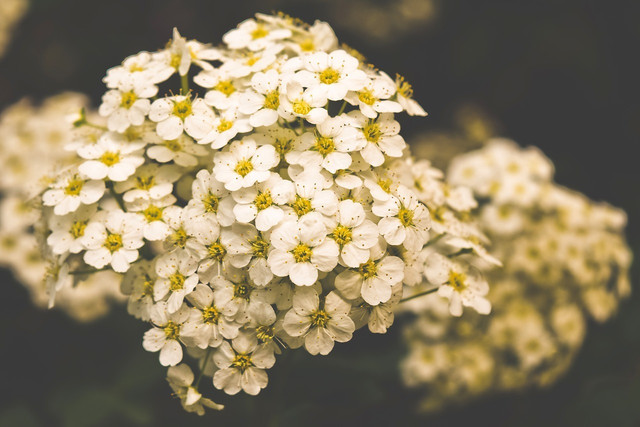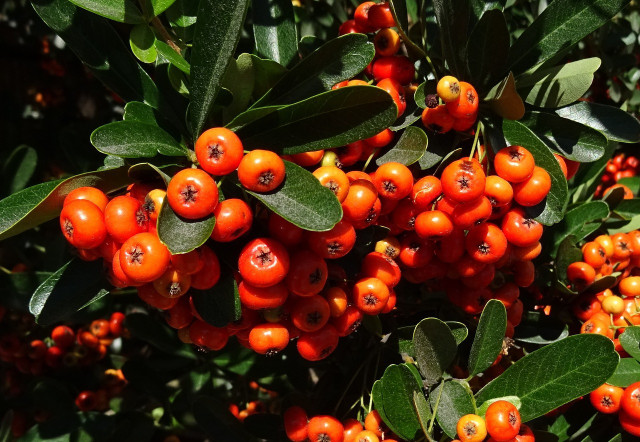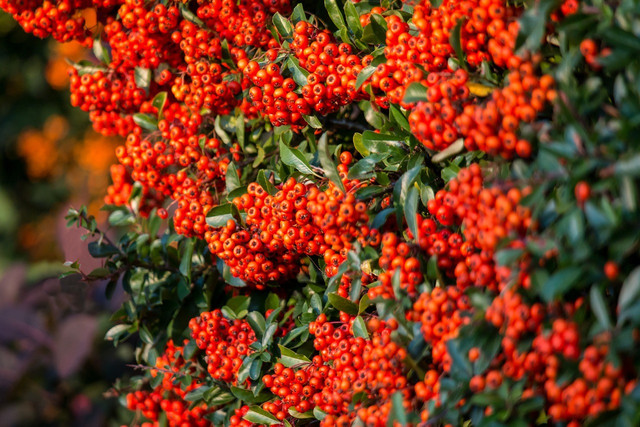
Firethorn forms dense and colorful hedges and is therefore well suited as a natural garden fence. In this article, you will learn how to properly care for the shrub and bring it into shape.
Whether as a hedge, a single plant, or a climbing plant, you can grow firethorn in your garden in a variety of ways. In nurseries you will often find the Mediterranean firethorn (Pyracantha coccinea), which originates from southeastern Europe.
In spring, the rose plant forms small white flower umbels. The red and yellow berry fruits of the firethorn not only provide a beautiful splash of color in your garden in the fall, they also serve as a food source for birds.
Contents
Planting firethorn as a hedge

The firethorn is suitable as a natural privacy screen. The evergreen plant requires little space. The bark has long, firm thorns.
- The right time: in garden centers, young plants are often available for purchase in plant containers. Theoretically, you can plant firethorn all year round – but the best time is from May to August.
- Proper planting: If you want to plant a firethorn hedge, you should plant about three plants per meter in the ground, at least 30 centimeters apart. Also, be careful not to plant the root ball too deep. A drainage layer of gravel prevents too much rainwater from reaching the roots of the firethorn.
- The right location: It is best to find a sunny spot in your garden for the heat-tolerant firethorn. There it forms the most flowers and berries. The evergreen hedge harmonizes especially well in color with roses, perennial plants and early bloomers like the tulip.
- The right soil: The firethorn has few demands on the soil. It should not be too wet – so make sure the soil is well-drained. In addition, you can mix in some humus so that the young plant gets enough nutrients.
Firethorn: The right care

The roots of the firethorn are so widely branched that the plant can normally supply itself with water and nutrients without any problems. Therefore, the firethorn is also a very low-maintenance plant that copes well with drought.
- Watering: Water the firethorn during extended periods of heat and on frost-free days in winter.
- Fertilizing: To help firethorn produce extra flowers and berries, you can cover it with a thin mulch layer of compost in the spring.
- Pests: Songbirds like to use firethorn hedges as nesting sites because the dense thorns protect them from cats and martens. In turn, they eat aphids and caterpillars that feast on the leaves. Therefore, the plant is safe from most pests. If you do discover spider mites or scale insects, you can fight them with home remedies.
How to prune the firethorn

To keep your firethorn hedge from getting out of shape, you can trim it back a bit in the spring after the flowering period. It is best to use hedge shears and wear gloves so that you do not injure yourself on the thorns. Cut off old shoots and those that grow too high so that they branch out more and grow more densely.
Tip: Because birds may nest in your firethorn, trim the hedge only before the birds’ nesting season. In the period from March 1 to September 30, it is forbidden by law in Europe to cut hedges heavily – only maintenance cuts are permitted.

